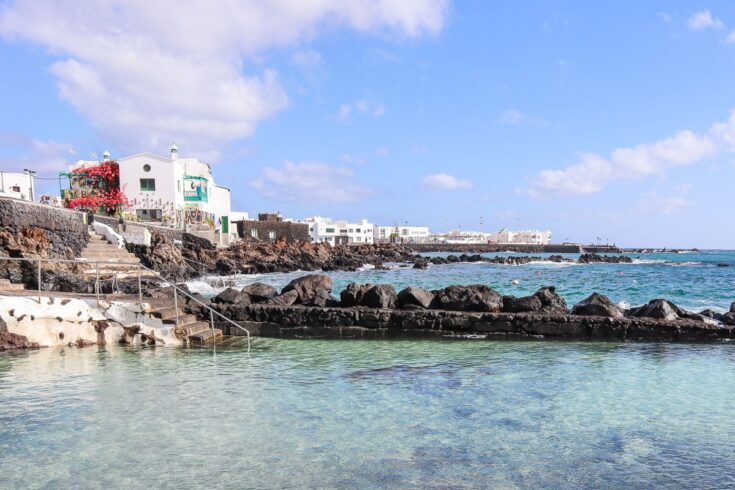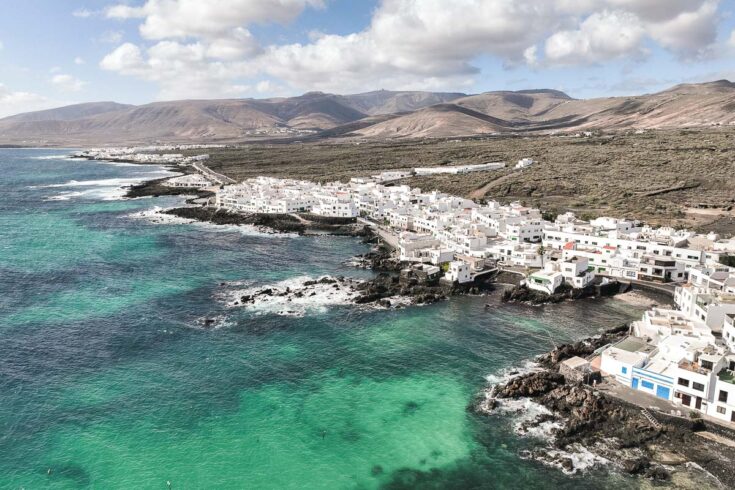Delicious wines, unique volcanic vineyards and spectacular views make a Lanzarote wine tour one of the top activities on the island.
For me, a great holiday usually has several components. Natural beauty, character, a range of activities to keep me busy, great food and something decent to drink. Lanzarote really did tick all the boxes, and that decent drink came in the form of a beautiful white wine produced metres from where we were staying.

I feel I should start this post by saying I’ve done a lot of wine tours on my travels, but none have been as unique as this one in Lanzarote! Have you ever seen wine from the Canary Islands on a menu, let alone tried any? Before visiting on this trip, I’d never heard anything about the wines from this part of the world. I assumed that was because they weren’t very good, but it turns out that wasn’t the reason at all!
The biggest reason why the wines from Lanzarote don’t appear on menus worldwide is because the quantity produced is so small. Once you see the vineyards, you’ll understand why.
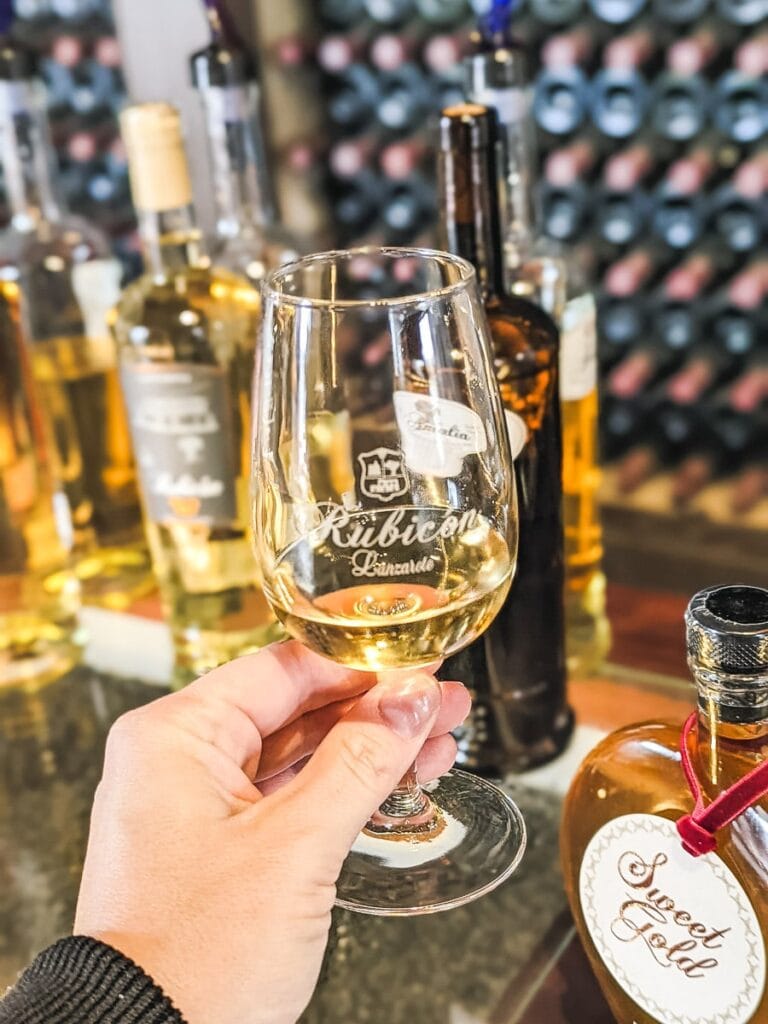
As a wine lover (not to be confused with alcoholic!) I was really excited to book onto a tour with Wine Tours Lanzarote, a local tour company which runs guided tours to vineyards and wineries on the island. We arranged the tour for one of our first days in Lanzarote. Not only was it a great way to learn about the wine production on the island, but we also got lots of insider knowledge on Lanzarote from our tour guide.
If you’re looking for a great activity for your holiday, I’d definitely recommend going on a wine tour. Here’s the lowdown on what to expect.
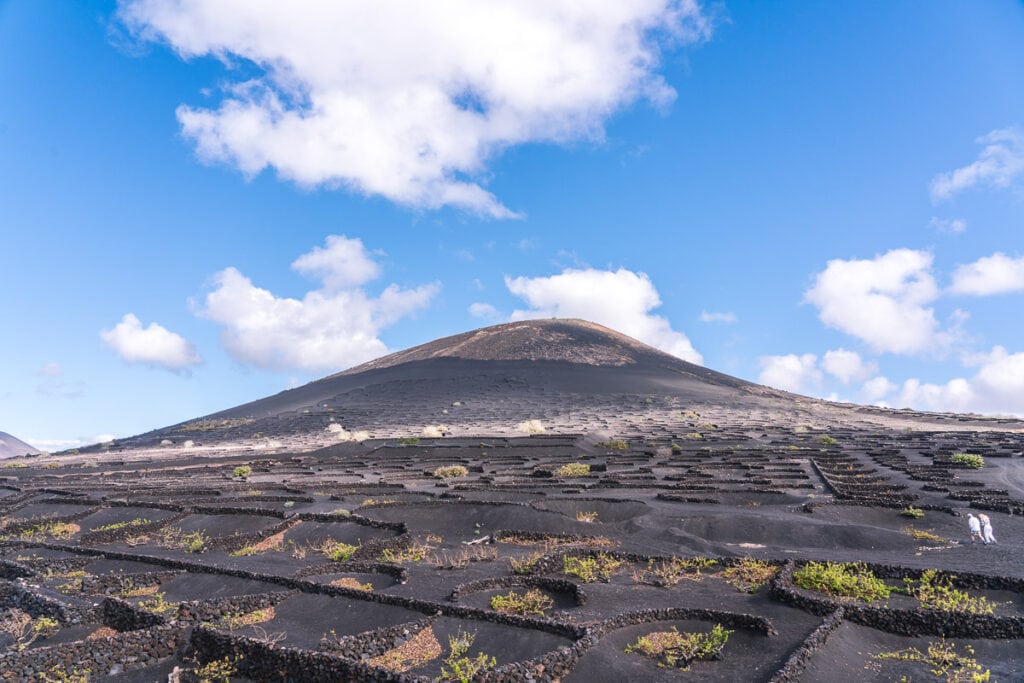
Planning your trip to Lanzarote? Here are a few quick highlights:
- This 2-hour cruise offers stunning island sunsets and dolphins – wow!
- A great way to see all of the island’s best sights in one day
- A great way to get out and explore the epic landscapes for yourself
What to expect on a wine tour in Lanzarote
We were picked up in the morning by our tour guide Anita. Once we had eight people on board the mini bus, we headed to our first stop. The tour would take us to three Lanzarote wineries over the course of three hours.
The tour company varies which vineyards it visits on its daily tours, and always combines a visit with one large producer with some small family run wineries. There are 21 wineries on the island, so there’s a nice selection to choose from. This gives a real insight into the styles of wine making on the island, as well as the challenges each winemaker faces when setting up a wine business there.
On our tour we visited Bodegas Rubicon, El Grifo and Bodegas El Tablero. At each winery we had two tastings, generally of contrasting wines. We walked around the vineyards, saw how wines were produced and visited the barrel rooms.

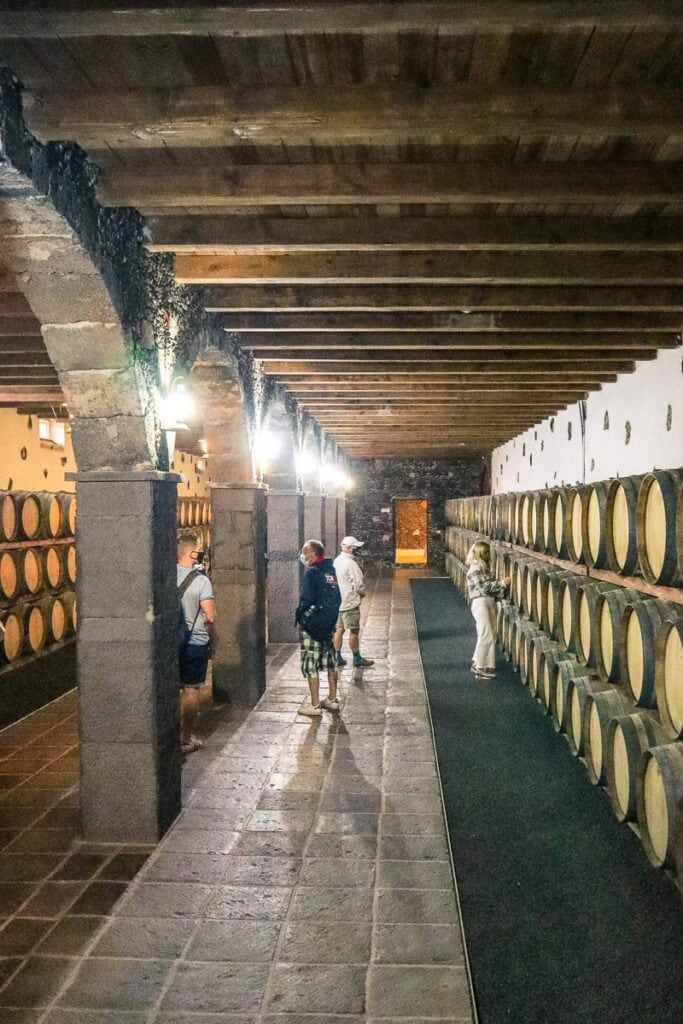
At the final winery we also had a plate of cheeses made produced on the island. I really enjoyed the way the group dynamic developed as the tour went on! By the last stop we were all chatting around the table, learning more about each other as we shared a lovely holiday experience. No doubt the wine helped loosen us up too!
There were plenty of opportunities to purchase bottles on this tour, with wine shops at each of the vineyards.

How do they produce wine in Lanzarote?
I couldn’t quite believe my eyes when I saw the vineyards in La Geria wine region of Lanzarote. The black volcanic landscapes were dotted with small crescents of black bricks, beneath which was a single vine growing out of a burrow. There were rows and rows of these small semi circles, some going right up the steep sides of the volcanoes.
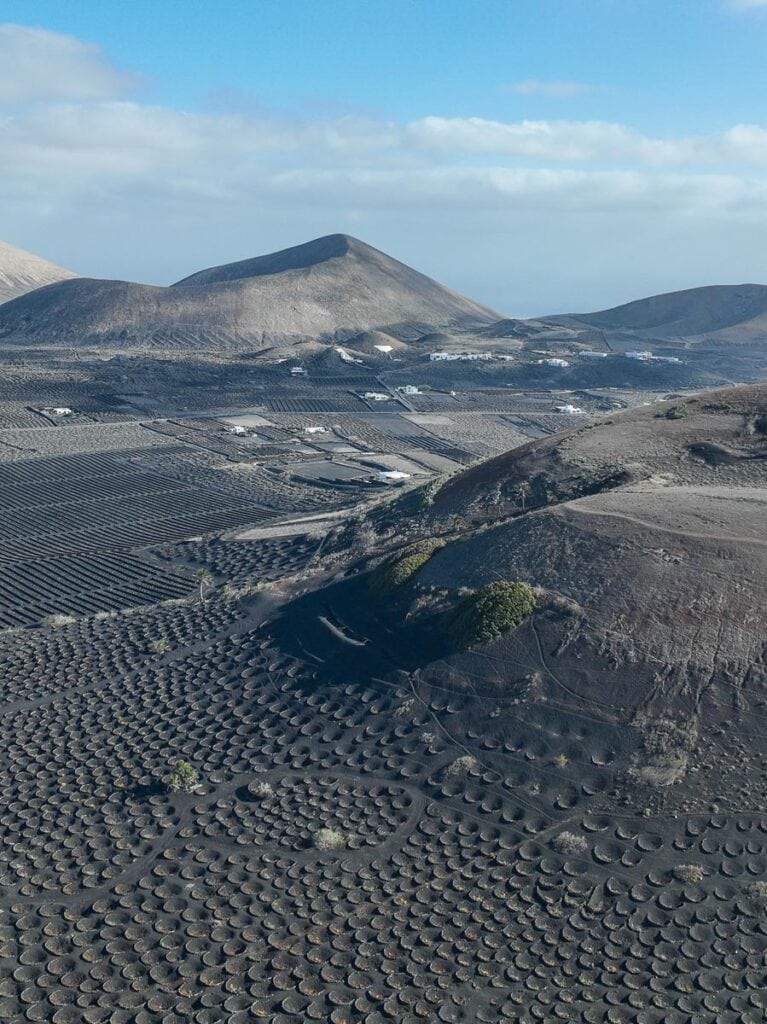
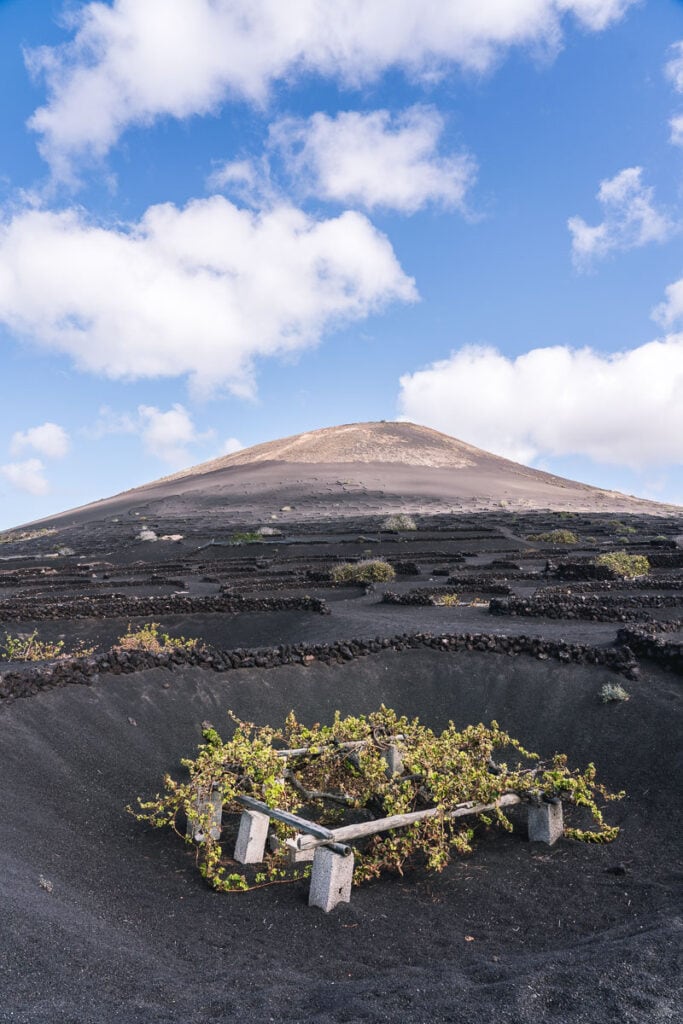
Not only is it a unique setting for a vineyard, with dormant volcanoes covered in charcoal coloured ash and rocks, but the technique is novel too. So how does it work? Well the challenges for growing healthy vines come in the form of lack of water and those pesky trade winds.
We learned lots from Anita during the tour. The volcanic land is dry, so the vines are planted deep in the ground. The thick stones trap dew and create a layer of water underneath, allowing the vines to reach a layer of nutrient-filled soil. It was surprising to hear that some vines are planted as deep as 3 metres.

In terms of the wind, there’s a simple defence structure around each vine. The ‘soco’ is the short protective wall made of lava stones. These small crescents are visible throughout the vineyards.
Obviously, there are two big setbacks with this technique: 1) the vines require a lot of space and 2) everything has to be done by hand. You can’t grow long rows of vines as you’d see in France or California. Each vine needs several metres to itself, which explains why they can’t produce vast quantities on the island. All the grapes are picked by hand, even right on the steep sides of the volcanoes! What a tough job that would be!

It was lovely to wander each vineyard, taking in the different views and learning more about the techniques used.
The harvest in La Geria usually takes place in July, with everything finished by August. We visited in the winter, so we didn’t see any grapes, but the views were still amazing!
Production quantity varies greatly between the different wineries too. Bodegas Rubicon produce around 450 litres a year, while El Grifo, the biggest wine producer in Lanzarote, produces around 1 million litres. Founded in 1775, it’s also one of the 10 oldest wineries in Spain that is still producing wine today.
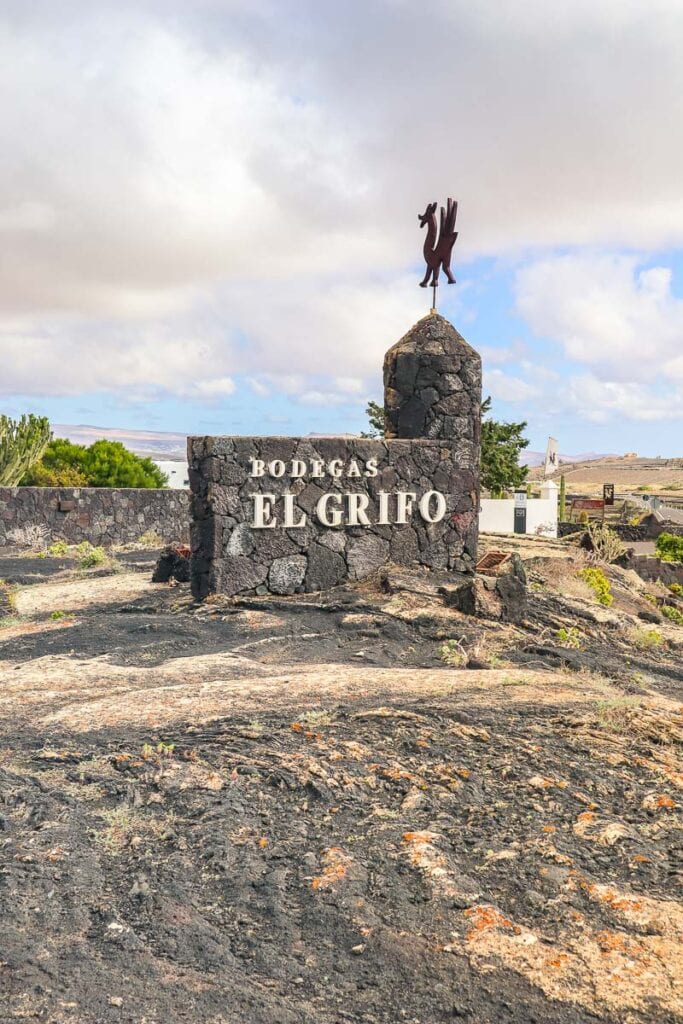
What is Lanzarote wine like?
Lanzarote’s unique volcanic soil definitely add to the flavour of the wine. The whites are crisp, dry and best drunk within a year. Even our tour guide mentioned the white wines don’t age particularly well.
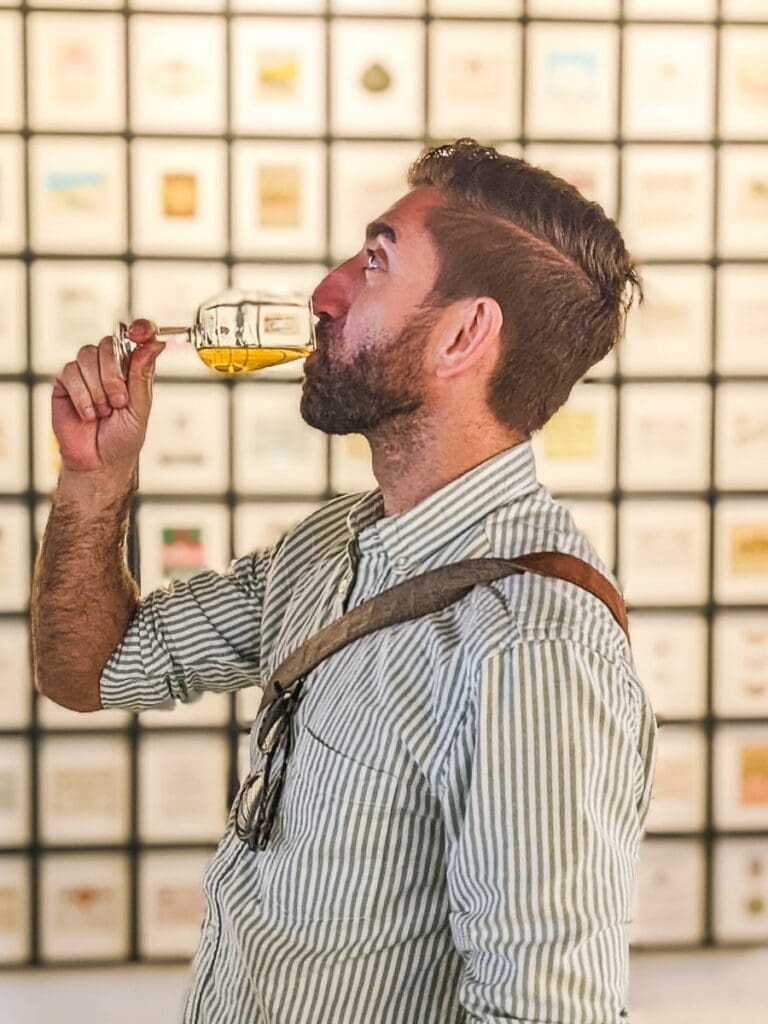
Interestingly, a plague which affected grapes within Europe never reached the Canary Islands, so there are some grape varieties found in Lanzarote that are not seen around the world. The most common and significant is malvasía volcánica, which is among the oldest white grape varieties in the world. Other grape varieties grown on the island include listán negro, muscatel, vijariego, syrah, diego and listán blanco.
The most popular wines are the crisp, dry whites made from malvasía volcánica. I really enjoyed these, in particular one from El Grifo. I don’t know if it’s the wine talking, but it felt like you could taste the minerals from the volcanic soil. It’d be the ideal wine to drink in the sunshine or to accompany a meal of fresh fish.

If you enjoy sweet wines, there are several good quality Lanzarote moscatel’s too. One I tried at Bodegas Rubicon was particularly nice, with notes of summer fruits, flowers and honey.
The reds and roses aren’t quite so strong, but Anita told us they’re improving year by year. If you’re interested in natural wine, you might enjoy the orange wine made at El Grifo. This wasn’t to my palette, but it was interesting to taste. To produce it they leave the skins on moscatel grapes and allow them to ferment. It’s not filtered or clarified, so there’s sediment too. It wasn’t one I’d want to drink again, but I love wine tours for giving you the chance to try things you wouldn’t normally order in a restaurant!
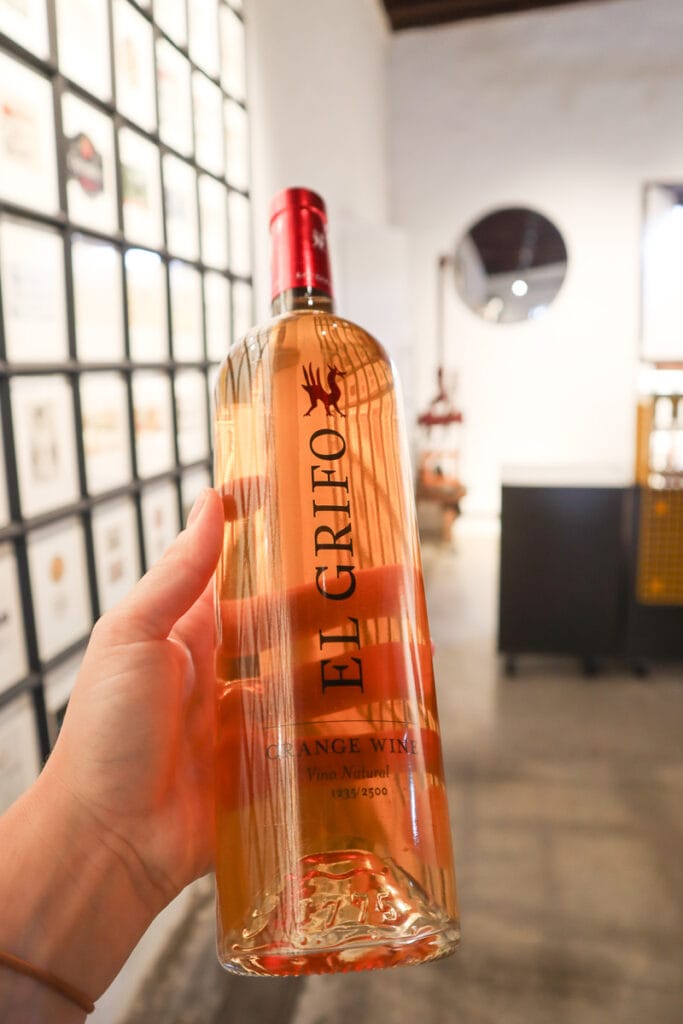
I really enjoyed my Lanzarote wine tour and would thoroughly recommend it. I’d suggest booking it for one of your first days on the island so you can get lots of insider tips from your guide for the rest of your holiday.
Check availability and book your tour here
If wine isn’t your favourite tipple, Wine Tours Lanzarote also run craft beer tours every Friday. You can find out more about these here. Also, if you’d like to try some wine from Lanzarote but aren’t visiting the island any time soon, you can order bottles via the wine shop here.
Wondering what else to do on your holiday? Don’t miss my huge guide to the best things to do in Lanzarote. There are over 28 fun activities, so you’re guaranteed to find something you like the sound of!
If you’re thinking of visiting Timanfaya National Park, check out my review of El Diablo Restaurant, where they cook food using the heat of the volcano! Plus, you can’t visit Lanzarote without a trip to Mirador del Rio – the best view on the island.
Plan Your Trip With These Lanzarote Travel Blogs
From wine tours and viewpoints, to beaches and restaurants, these Lanzarote travel blogs are guaranteed to help plan your trip!
From visiting beautiful beaches and adventures through the volcanic landscapes, to wine tours, amazing architecture, local cuisine and markets, these are the best things to do in Lanzarote.
From the stunning Punta Mujeres and buzzy Costa Teguise, to surf mecca Famara, find out the best villages and towns in Lanzarote.
Quiet beaches, amazing buildings and volcanic landscapes, here’s how to get off the beaten track in Lanzarote.
Are you looking for the best beaches in Lannzarote? From Papagayo to Caleton Blanco, these are the Lanzarote beaches you just have to visit!
Thinking of visiting Mirador del Rio in Lanzarote? Find out what to expect, including details on opening hours, prices and plenty of beautiful photos too!
Are you planning a road trip in Lanzarote? From hiring a car to where to visit, this is the ultimate guide to driving in Lanzarote, Spain!
Is it worth eating at El Diablo Restaurant – Lanzarote’s volcano restaurant? From the menu and service, to volcano views, this review tells you all.








